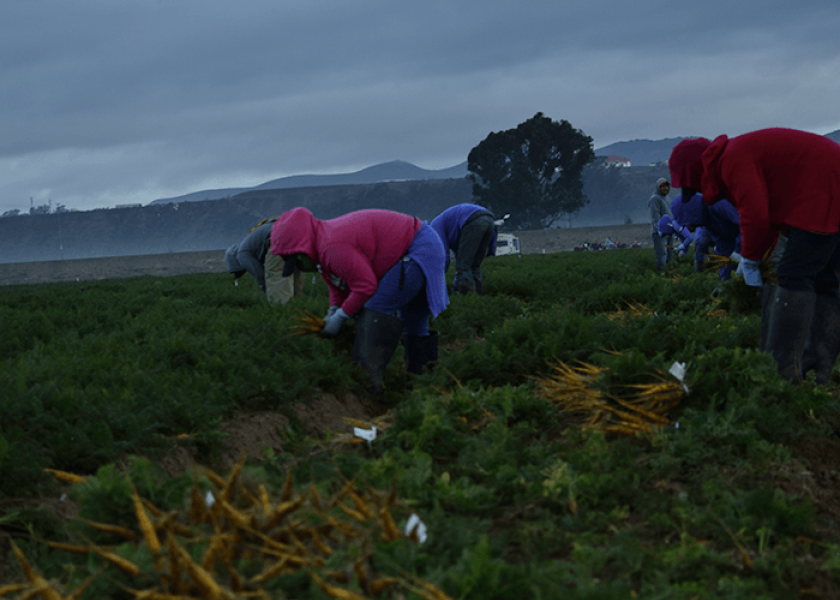H-2A reform finds grower support

Growers and industry leaders are praising the Trump administration’s plan to overhaul the H-2A guest worker program, changing the way wages are determined and streamlining other parts.
However, the fast-track proposal doesn’t solve all the problems with the program, industry leaders said.
The Department of Labor will take comments on the nearly 500-page proposal until mid-September.
Growers welcomed the reform effort but many had not read through the lengthy document as of July 18.
The H-2A program has become an integral part of doing business for many growers.
Maureen Torrey, co-owner of Torrey Farms, Elba, N.Y., said the farm relies on the program for about 90% of its labor.
“We work hard at making it work well for us,” she said. “I would not want to give it up at this point.” She said the reform effort appears to make the application process more efficient and will allow growers to advertise for open job online rather than paying for print ads in local or regional newspapers. Firms must advertise openings to domestic workers before being approved for guest workers under the H-2A program.
“That’s a wasted cost and last year it probably cost close to $20,000 to advertise (in newspapers),” she said.
Although she said she had read only a fraction of the rule as of July 18, Torrey said the H-2A proposal appears to change the rule about how long firms would be compelled to hire domestic workers if H-2A workers had already begun their jobs. Under current rules, agricultural employers must hire domestic workers for up to 50% of the H-2A contract term (which can be as long as 10 months) if the domestic workers apply for a job. That can result in some farmers sending H-2A workers home early.
The proposed rule would change the requirement to the first 30 days of the H-2A contract, Torrey said.
The document from the administration doesn’t appear to address the need for year-round workers for dairies, greenhouses, mushroom farms and other agricultural operations, she said.
It may take a combination of regulatory reform and Congressional action to change the program to be more responsive, she said.
The escalation of wage rates in the H-2A program also is a concern, she said.
New York state’s H-2A wage rate is $13.25 per hour.
“That’s one issue that they need to take a look at — just how (H-2A wage rates) have increased faster than inflation or the consumer price index — we just don’t know what the basis of (that wage rate increase) is,” Torrey said.
Torrey said any growers who use H-2A should be a part of a trade organization that communicates about the latest regulations.
Scott Marboe, director of marketing at Oneonta Starr Ranch Growers, said he hasn’t had time to look through all of the proposed H-2A regulation yet, but said that the guest worker program has become a “standard” way of doing business. “Without it, I don’t think we get the crop harvested.”
The agriculture workforce has changed dramatically since the H-2A program was crafted, and changes in the program are needed, Lisa Lochridge, director of public affairs for the Florida Fruit & Vegetable Association, said in a statement.
"One significant improvement in the proposed rulemaking is to allow for staggered entry of H-2A workers into the U.S. within 120 days from the projected start date, reducing the need for multiple applications," she said.
FFVA will be reviewing the proposed regulatory changes and submitting comments, she said.
Michael Marsh, president and CEO of the National Council of Agricultural Employers, said the H-2A program grew from about 240,000 positions certified last year to a projected 300,000 this year. A big part of the reform proposal he said, is attempting to make the whole application process digital. The proposal also appears to alter the way minimum wages would be calculated but separating high tech precision agriculture positions from field workers.
The United Fresh Produce Association said the proposal includes some changes it supports.
“In particular, United Fresh is pleased with the electronic filing and digital signature proposal along with staggering entry of H-2A workers on a single application,” according to a United Fresh statement.
Still, the group said a more complete Congressional overhaul of the program will be needed to preserve the ability of currently undocumented workers to remain in agriculture.
“Perhaps you can start comparing apples to apples and oranges to oranges because when you have workers that are doing one type of work, they don’t get blended together with folks that are in an incredibly different category,” Marsh said. The proposal appears to have a compressed timeline for implementation, perhaps as early as the 2020 growing season.
“It seems that the administration really wants to move this along and see if we can this squared around sooner rather than later,” he said. Marsh said the group will talk to members and legal counsel before it submits comments on the proposal.
According to the proposal, the reforms would:
- Mandate electronic filing of job orders and applications;
- Allow employers to stagger the entry of H-2A workers on a single application;
- Upgrade standards for housing/public accommodations that growers in the program must offer;
- Strengthen surety bond requirements;
- Beef up enforcement, such as banning growers who have substantial violations of H-2A; and
- Update methods of setting wages, and ensure those wages don’t have an effect on U.S. worker in similar jobs.
Related articles:
UPDATED: H-2A regulatory reform proposal finally published
Demand for H-2A program continues to rise







